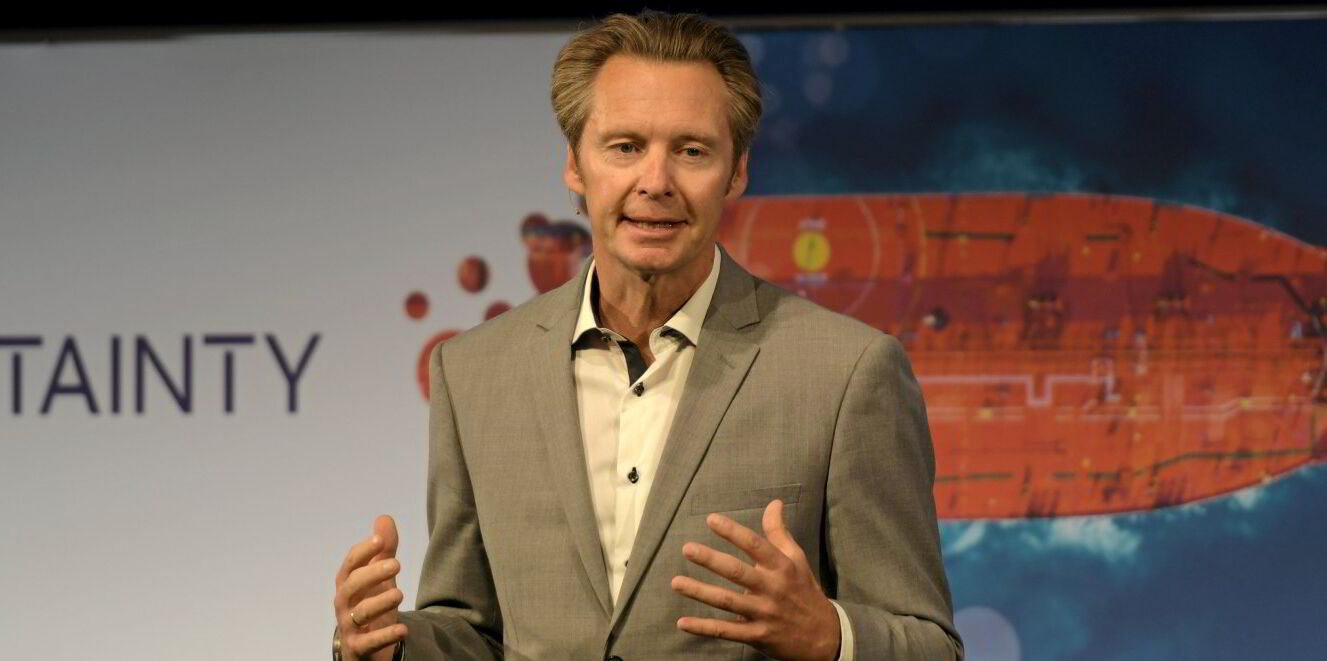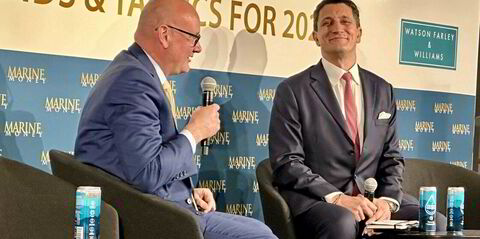DNV head of maritime Knut Orbeck-Nilssen says the decarbonisation of shipping is slowing, leading to a growing gap between policymakers’ expectations and what the industry can deliver.
He cited the trends he believes signal the slowdown in an interview with TradeWinds in Athens in early June, and his comments have been echoed by shipping executives.
Ship scrapping rates are the first indicator, Orbeck-Nilssen said.
Vessels are not being recycled, even though scrap prices are high, as strong markets keep older ships in service “as owners squeeze more juice out of them”.
Cash buyer Wirana noted in its latest report that low volumes of tonnage were going to Indian recyclers, with prices hovering at about $510 per lightweight tonne for a capesize bulker and $565 per lightweight tonne for container tonnage.
The second indicator, according to Orbeck-Nilssen, is vessels busily deployed and not sent for retrofitting: “There is no incentive now for owners to bring their vessels into the repair yards for upgrades and making them more energy efficient.”
The third sign is that the newbuilding market has become a seller’s market, with shipyard space at a premium and delivery dates running into 2028.
“If you look to the newbuilding market, there is a supply-dominant situation where the yards are in a strong position, and for owners wanting to order dual-fuel capabilities, it comes with too high a capex investment,” he said.
“And the problem for the owners, they cannot yet pass on that cost.”
Orbeck-Nilssen’s comments were echoed by Mikael Skov, Hafnia chief executive, at Marine Money Week in New York when he said there had been an underinvestment in alternatively fuelled tonnage, and regular tonnage was being ordered as a preference.
“Everyone felt the transition [to future fuels] would take place overnight,” Skov said. “In reality, we’ve seen oil and gas continue to grow.”
TradeWinds understands that the mark-up on an LNG-capable dual-fuel vessel is about $15m due to engine and fuel systems. Methanol and ammonia-capable vessels will be higher.
An option that is increasingly popular is for owners to order ships with a form of class notation for being “fuel ready”. Experts have said this more economical option does not delay slot times at yards and can be used to make a vessel more attractive on the charter market.
“The problem for the shipowners is they cannot yet pass that cost [for future fuel-capable vessels] on to the charterers and cargo owners,” Orbeck-Nilssen said.
He emphasised that 93% of the fleet today is still conventionally fuelled.
His final point was on fuel availability and cost. There is a lack of government incentives to ensure local energy producers direct clean electricity and fuels towards shipping’s needs.
“The last argument is probably that if you look to the investments on renewables, costs are going up and it is not that favourable, and [power from] whatever is being built will be transferred directly to the onshore grid as electricity,” he said, adding that a limited number of shipowners will be able to access green fuels.
“Which politician in any country do you believe would rather see fuel produced for the maritime industry rather than provide his or her own country?”
This point was raised in a recent debate in Brussels about the revised Renewable Energy Directive in the European Union.
Under the RED III requirements, member states will have to ensure a supply of a growing certain percentage of renewable fuels — of non-biological origin — for energy use.
For Belgium and the Netherlands, with large energy use going to their major ports, there is a realisation that they need to work together to ensure marine fuel manufacturers and clean-energy producers can deliver the required volumes, as pointed out at the time by Belgian energy minister Tinne Van der Straeten.
Belgium and the Netherlands signed an agreement on harmonising supply and Van der Straeten wants to encourage other north-western European countries to come aboard a marine fuel alliance.
“So, all in all, I think this is all going to really slow down decarbonisation,” Orbeck-Nilssen said.
“I think the gap between what we now have, with the politicians wanting to go net zero by 2050, and what is realistically achievable in the industry is getting bigger.”





